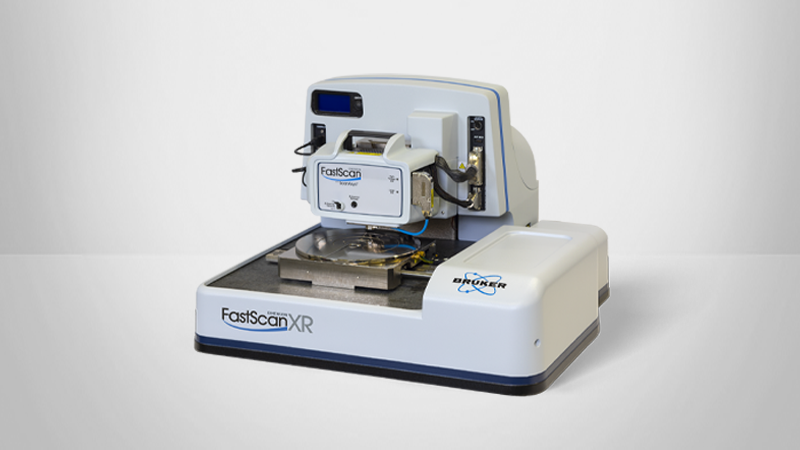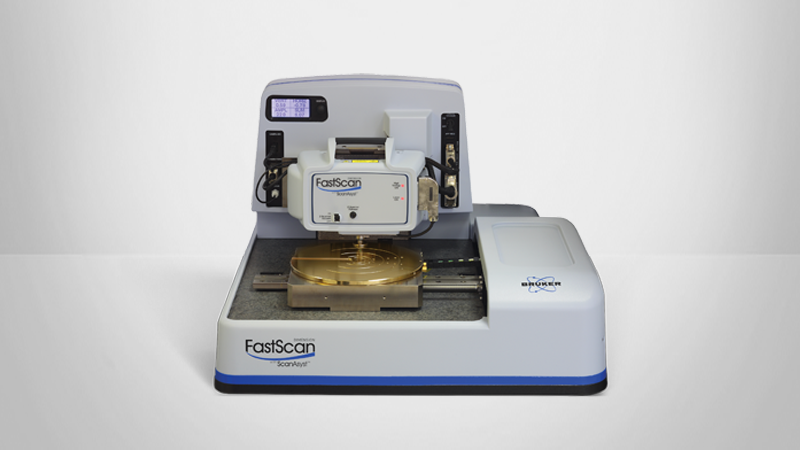Battery materials
Atomic force microscope is especially suitable for used as a tool of lithium ion battery research and to solve the life of battery capacity, power density, and safety of the key challenges.Fundamentally, the battery is an electrochemical structure, electrochemical AFM can be directly in the operation of in situ to detect the change of the electrode surface, even can measure the change of local electrochemical activity.For example, using the AFM study of high capacity lithium ion anode can help to understand the evolution of the solid electrolyte interface (SEI) layer and degradation, this evolution and limit the power density of degradation and battery life.At the cathode, can be measured by the electrical and mechanical characteristics of related components distribution, characterization of conductivity changes, and accurately determine the limited battery capacity of active metal oxide grain.Finally, on the stretch to AFM imaging of separation membrane, can be on dendrite growth lead to catastrophic damage when provide insight into the fracture mechanism.
In the presence of electrolyte, can local electrochemical activity and surface conductivity of in situ measurement, for the characterization of other energy storage and conversion methods (such as supercapacitors, fuel cell and solar energy) is also useful.
The main function
- Use the EC - AFM characterized in situ operation in the process of anode charging cycles
- usePeakForce QNM®Of high capacity anode on the SEI layer for quantitative research
- usePeakForce SECM®Direct detection of local electrochemical activity
- usingDataCube®Model for multimodal cathode characterization
- EC - AFM, SECM and glove box integration of comprehensive solutions
Anode - in situ imaging operation
Lithium ion battery life depends largely on the formation and evolution of passivation SEI layer.The challenges facing the great changes are in battery electrode during charge and discharge volume, resulting in the deformation of the SEI layer is quite big especially for high capacity anode.The ideal experiment is in a state of the battery work directly detecting weak SEI layer, the nimble operation has been considered to be very difficult.A set of images shown here has adopted the above operations, from brown university Sheldon's team cooperation.Figure shows the use PeakForce QNM with electrochemical batteriesDimension Icon®The observed pattern of a submerged glove box Si anode.Experiments for the first time to directly observe the formation of the SEI layer in the process of lithium, crack.Strength degradation of multiple charge and discharge cycle tracking, the results show that the initial crack cannot repair, the conflict and conjecture.
These experiments also create conditions for estimating fracture toughness and fracture toughness is the key parameter of SEI layer rupture (see us in the ACS Energy Letters (American chemical society Energy communication) cooperation on paper:"The In Situ and Operando Investigations of Failure Mechanisms of the Solid Electrolyte Interphase on Silicon Electrodes").To learn about the further research of the SEI layer, see also recently Nature Communications (Nature Communications) paper:"Lithium Anode Stable in Air for Low Cost Fabrication of a Lithium Dendrite - Free '", in collaboration with the Nobel Prize winner John Goodenough.
Cathode - multimode characterization
Lithium ion cathode is a kind of complex heterogeneous mixture, it contains the metal oxide particles used in lithium ion storage under the discharge, by mixed with carbon black material can be used to volume change of the polymer coated adhesive material, in order to maintain a high electrical conductivity, so as to maintain a high power density.This image shows the seriesDimension Icon XRThe DataCube imaging and reveal how the SSRM helps group distribution between particles of drastic changes.The DataCube mode available modulus figure will hard metal oxide particles with a clear distinction between soft glue around the area, and at the same time to obtain the conductivity of the drawings reveals the uneven distribution of carbon black a sex.As you can see, the images near the top edge of a particle is not covered by carbon black, and a set of electrical conductivity extracted from the same data cube images will be the particle identification for inactivation, namely in the whole working voltage range in the inactive state.
For more information
Read our battery research e-book, which is used to describe the lithium ion battery materials mainly analysis technology, including atomic force microscope (AFM).E-books work explains how the technology and its various patterns, and they can be used to analyze the cell materials is introduced in detail, and what kind of information they can be generated.It also introduces the case study, to show the work in the laboratory scientists how to apply these technologies.
The recent webinar
Related publications
- Shen, "without Dan lithium battery low-cost manufacturing of lithium anode stability" in the air,naturalCommunications, 10900 (2019), DOI: 10.1038 / s41467-019-08767-0.
- Becker et al., "in-situ AFM are used to determine the ALD coating sealed a si enhanced light cycle stability of the microstructure", the ACS Appl. Mater.interface2016, 8, 1, 530-537.
- Chen et al, "lithium ion battery deformation and fracture behavior of polymer microporous separator"The RSCAdvance in 2014, 4140.
- Hiesgen et al., "AFM as Li + S sulfur high capacity battery cathode analysis tool", BeilsteinNanotechnology magazine in 2013, 4611.
- Hiesgen et al., "Mr Wong current and mechanical properties of micro analysis ® atomic force microscopy study"membraneIn 2012, 2783.
- Kumar et al., "silicon electrode and solid electrolyte lithium strain induced loss"The ACS Appl Mat & Int2017, 9, 28406.
- Kumar et al., "in Steu and operations of silicon electrode between the solid electrolyte failure mechanism of the investigation", the ACS energyLetter,1,4,689 2016-697.
- Lakowski et al, the photoelectron nano-scale semiconductor interface/catalyst in the chemical, naturematerial, 2019;DOI: 10.1038 / s41563-019-0488 - z.
- Nellist et al., "water splitting catalyst and interface analysis inductive electric power atomic force microscope",Natural energyIn 2018, 3 46-48.

